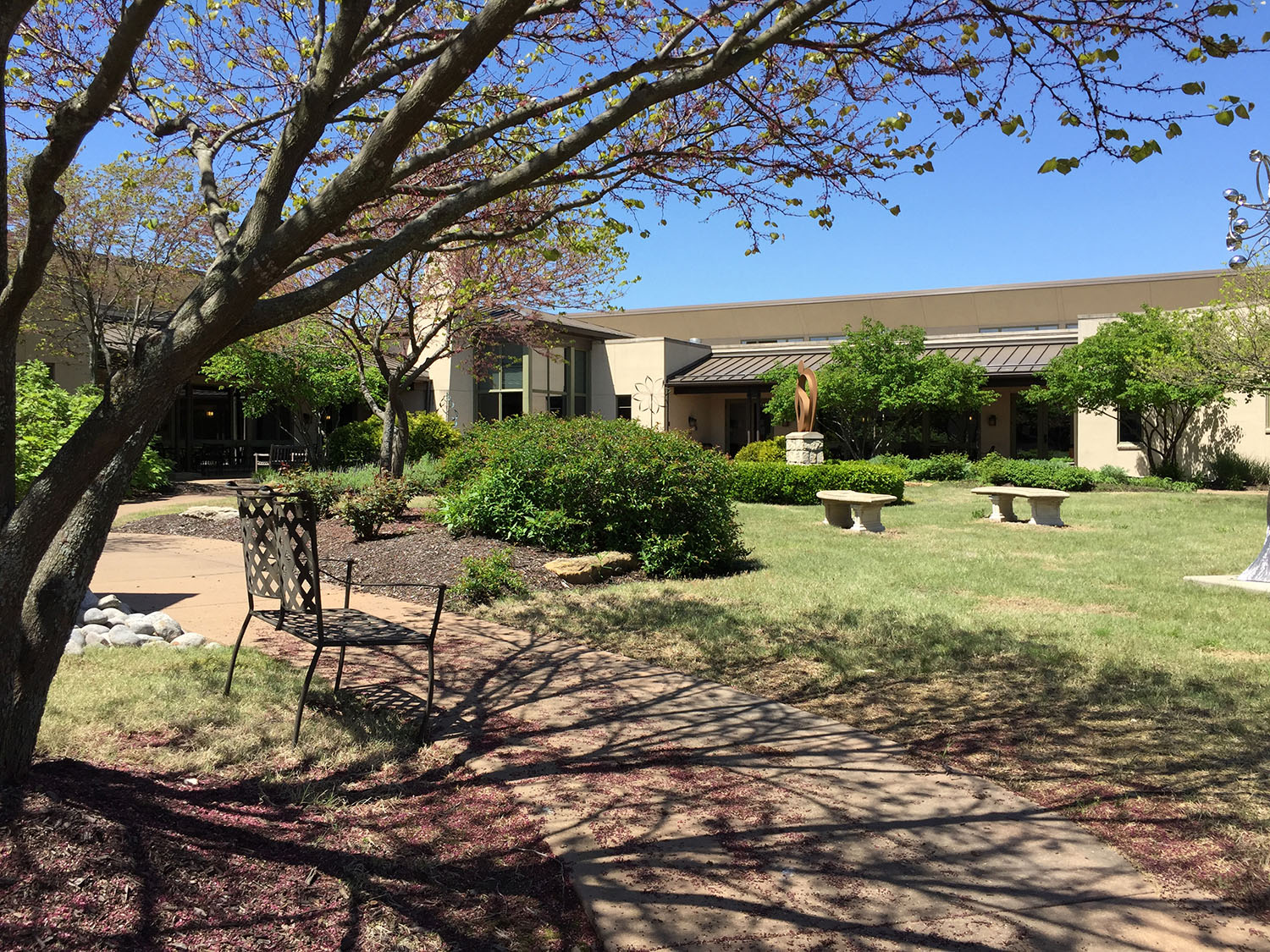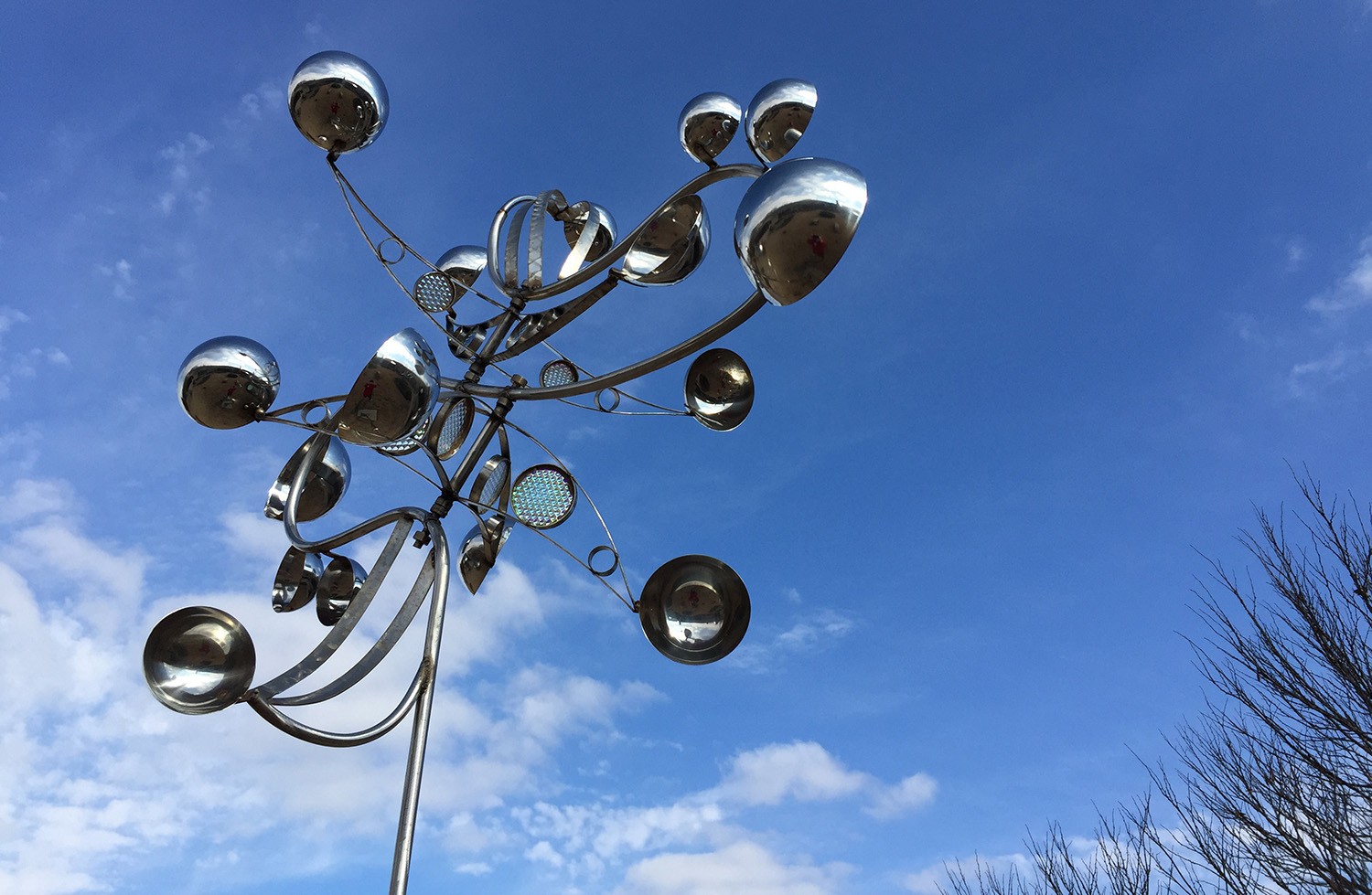Care to Honor A Lifetime

“Even though it’s a sad experience, it’s always been an experience of honor and respect.”
Story by Sarah Ruttle
When Lois showed the first signs of early Parkinson’s Disease, their son Danny and his siblings agreed they wanted to help their parents stay in their home as long as they could. He shares that some days were very difficult and some months – even years – felt very long. Despite the challenges, it was rewarding for them to see their mom Lois and dad Robert stay together in their home into their 90s.
When their needs became too complicated to meet at home, the family sought the help of Kansas City Hospice to arrange their move to Kansas City Hospice HouseTM (KCHH). They had one request – a first in KCHH’s 15-year history – “we wanted to have our parents here together” Danny shares. The siblings requested a larger room that could accommodate two beds and asked that they be arranged close enough for their parents to hold hands with each other in their final days.

Hospice offers a range of care options to help people live with comfort, wherever they call home.
Expert and compassionate care
Hospice and palliative care providers often speak to their specialized expertise as advanced illness and end-of-life healthcare providers. They cite the long and rigorous formal education, as well as the practical field experience, needed to provide for the needs of patients at the end of their lives. They toil over Medicare compliance, family satisfaction scores, and hospice data sets, and spend countless hours case conferencing in Interdisciplinary Team meetings to ensure patients’ pain and symptoms are managed and their comfort and quality of life are optimized.
What they often forget to share are the many quiet moments experienced with families to ensure their loved ones are respected and honored, for who they are as a person and for the lives they lived before they became hospice patients. For Lois and Robert, togetherness and physical touch through hugs and hand-holding, were hallmarks of the life they spent together. It was something they had so often communicated to their five children, even as they aged, it couldn’t be overlooked in their final days. Honoring this wish not only brought the couple peace as they died but gave their large family – children, grandchildren, and great-grandchildren – the solace of knowing they upheld what was important to them when they no longer could.
A month for awareness
November is National Hospice and Palliative Care month, giving us the opportunity to raise awareness about the importance of ensuring the highest quality of care for all people in our community coping with life-limiting illness. According to the National Hospice and Palliative Care Organization, nearly 1.6 million people annually receive care from hospice and palliative care providers in the U.S.
Palliative care is provided when symptom management is needed for advanced illness or life-threatening disease and can be provided while curative treatment is being pursued. Although also a form of palliative care, hospice is for those who choose to shift focus from a cure to comfort. While research shows that a longer length of stay on hospice has benefits for patient well-being and patient and family satisfaction, over half (53.8%) of hospice patients enroll in care for 30 days or less. For any hospice and palliative care provider, the focus is always on maximizing quality of life and providing services to the whole person, and their family members, that allow them to enjoy their remaining time together. Whether we provide them with care for days, months, or longer, we identify strategies that work best to help each patient and work side-by-side with them, wherever they are in their journey.

The power of touch
Human touch has been shown to be a powerful force in providing comfort, calm and reassurance to others. It’s a way to communicate our emotions, from a pat on the back to proudly recognize an accomplishment, to the grip between an aging couple who has shared a lifetime of love with each other. The need for human touch among patients and their families is something increasingly recognized in hospice and palliative care, and something that became painfully more apparent during the most isolating moments of the pandemic.
The power of touch can be easily overlooked, especially as we age and lead increasingly busy and more individualistic lives. The importance of early touch, sound and other sensory stimulation for newborn babies as they begin life is widely recognized. Often overlooked, is how critical this same sensory experience becomes to providing comfort and peace to someone in the last stages of life.
There has long been an awareness among clinical hospice and palliative care staff of the importance of respectful touch, as they move patients and provide them with personal cares such as bathing or brushing their hair. There is a growing recognition among providers of the benefits of therapeutic touch, which research shows can decrease pain and anxiety, improve symptoms of sleeplessness and fatigue, and increase quality of life for palliative patients. Even when physical pain is well-controlled, hospice patients often experience agitation and anxiety. It can be difficult to communicate what they are experiencing, including feelings of uncertainty about what is to come.
To help ease these distressing emotional experiences, hospice providers offer non-denominational chaplain services and some, like Kansas City Hospice, enlist the services of expressive therapists who use the healing and calming power of music, art, touch and other sensory experiences to help people find calm and ease their anxieties. Even after 40+ years as a hospice provider, the seemingly simple request of one family to grant their parents the ability to hold hands as they lived their final days just as they had lived their lives, close to each other, reminds us how powerful the human touch can be.
Skill and compassion are both cornerstones of hospice and palliative care. Compassion can mean a lot of things and for Lois, Robert and their family, it meant taking extra steps to look closely at the Standards of Practice rules and doing everything we could to meet their request. Not only did it make this family feel respected, it was a fulfilling moment for our staff who were able to help honor their life.

A quiet bench adorns a garden pathway at Kansas City Hospice HouseTM.

A wind sculpture at Kansas City Hospice HouseTM gives visitors a sense of calm.






